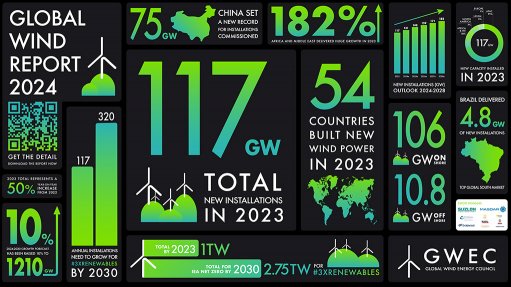Bank’s report offers nuanced view of Africa’s rising middle class
A new report by a leading South African banking group confirms that the middle class has expanded materially in 11 key sub-Saharan African countries over the past 14 years to around 15-million households, from less than 5-million in 2000.
But it also cautions that by far the majority – over 85% in fact – of the 110-million households across the surveyed countries remain firmly within the low-income band, making them vulnerable to economic shocks.
Using South Africa’s Living Standard Measure (LSM) methodology, Standard Bank’s ‘Understanding Africa’s middle class’ report covers the emergence of the middle class in Angola, Ethiopia, Ghana, Kenya, Mozambique, Nigeria, South Sudan, Sudan, Tanzania, Uganda and Zambia.
It finds that, between 2000 and 2014, Nigeria’s middle class swelled by 600% to 4.1-million households, or 11% of the total population. The report suggests that 21% of households in Angola could be considered middle class, as opposed to 14% in Sudan and 10% in Zambia.
The East African countries surveyed, however, fared poorly with a uniformly high shares of low-income households as a share of total households across the region – 99% in Ethiopia, 97% in Tanzania, 96% in Uganda and 92% in Kenya.
In addition, the most profound consumption shifts were occurring at the ‘base of the pyramid’, or in the low-income bands covering LSM 1 to LSM 4, which is where businesses would need to tailor their offerings – consumption in this band is below $5 500 a year.
Standard Bank political economist Simon Freemantle, who presented the report’s findings on Tuesday, says the performance remains broadly supportive of the ‘Africa Rising’ narrative – despite the bank’s middle-class estimate being considerably lower than the 350-million people reported by the African Development Bank in 2011.
He notes that 6-million new middle-class households, with the average household comprising around five people, have been added in the surveyed countries over the period, compared with only 1-million between 1990 and 2000. In addition, the report estimates that a further 14-million middle-class households will be added across the countries by 2030 – triple the current number.
“Including lower-middle-class households, the overall number swells to over 40-million households by 2030,” Freemantle says, while acknowledging that this base case is built on assumptions that are highly sensitive to political, economic and social developments. But he also stresses that the figure does not represent the best-case scenario.
There is an undeniable rise in income across many of Africa’s key frontier economies, allowing the formation and strengthening of a substantial middle class. “However, the scale of Africa’s middle class ascent has, we believe, been somewhat exaggerated in line with the at times breathless ‘Africa Rising’ narrative.”
He says the report aims to offer a more accurate depiction of the size of the middle class, without undermining optimism about the continent’s advance. “In providing a more definitively measured account of the continent’s consumer potential, this report, we hope, has added depth and inspiration to the reality of Africa’s ongoing development.”
The publication follows closely on from the inaugural US-Africa Leadership Summit, held in Washington DC, where a combined $14-billion in deals were announced for Africa and where President Barack Obama announced a series of steps to improve trade and investment with Africa.
It also follows confirmation by the governments of Brazil, Russia, India, China and South Africa at the sixth Brics Summit in Fortaleza, Brazil, that the ‘New Development Bank’ will support African infrastructure projects.
In addition, the European Commission also recently launched its €415-million Pan-African Programme to support Africa's integration process at a continental level.
Freemantle believes the bank’s report offers confirmation of the varying levels of opportunity that emerge from Africa’s frontier markets. But he also believes it also offers improved visibility not only of the opportunities, but also of some of the complexities involved in pursuing them.
Comments
Press Office
Announcements
What's On
Subscribe to improve your user experience...
Option 1 (equivalent of R125 a month):
Receive a weekly copy of Creamer Media's Engineering News & Mining Weekly magazine
(print copy for those in South Africa and e-magazine for those outside of South Africa)
Receive daily email newsletters
Access to full search results
Access archive of magazine back copies
Access to Projects in Progress
Access to ONE Research Report of your choice in PDF format
Option 2 (equivalent of R375 a month):
All benefits from Option 1
PLUS
Access to Creamer Media's Research Channel Africa for ALL Research Reports, in PDF format, on various industrial and mining sectors
including Electricity; Water; Energy Transition; Hydrogen; Roads, Rail and Ports; Coal; Gold; Platinum; Battery Metals; etc.
Already a subscriber?
Forgotten your password?
Receive weekly copy of Creamer Media's Engineering News & Mining Weekly magazine (print copy for those in South Africa and e-magazine for those outside of South Africa)
➕
Recieve daily email newsletters
➕
Access to full search results
➕
Access archive of magazine back copies
➕
Access to Projects in Progress
➕
Access to ONE Research Report of your choice in PDF format
RESEARCH CHANNEL AFRICA
R4500 (equivalent of R375 a month)
SUBSCRIBEAll benefits from Option 1
➕
Access to Creamer Media's Research Channel Africa for ALL Research Reports on various industrial and mining sectors, in PDF format, including on:
Electricity
➕
Water
➕
Energy Transition
➕
Hydrogen
➕
Roads, Rail and Ports
➕
Coal
➕
Gold
➕
Platinum
➕
Battery Metals
➕
etc.
Receive all benefits from Option 1 or Option 2 delivered to numerous people at your company
➕
Multiple User names and Passwords for simultaneous log-ins
➕
Intranet integration access to all in your organisation





















